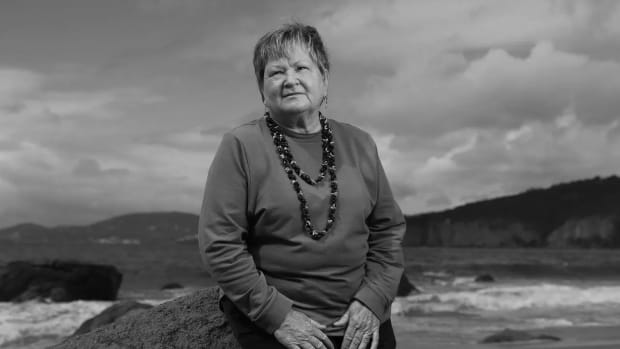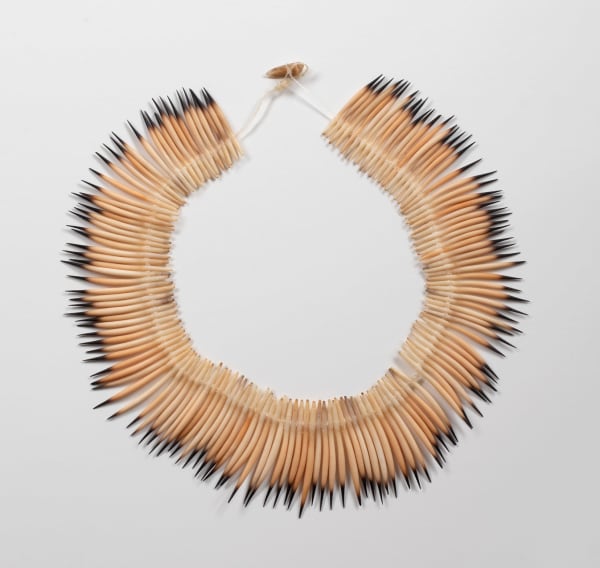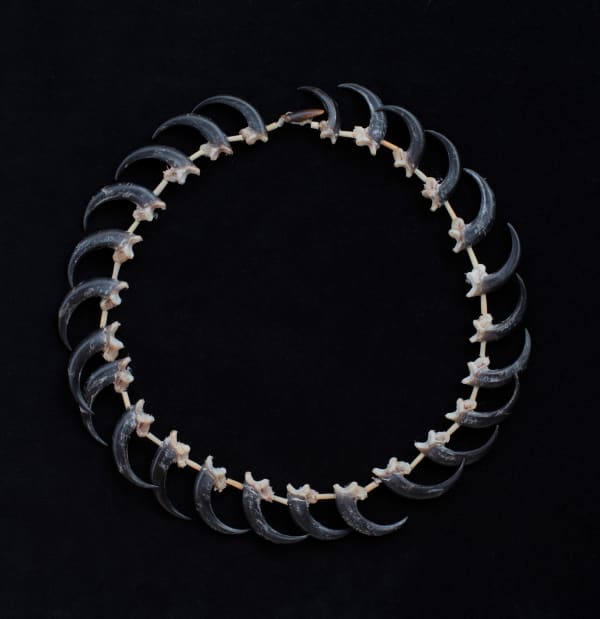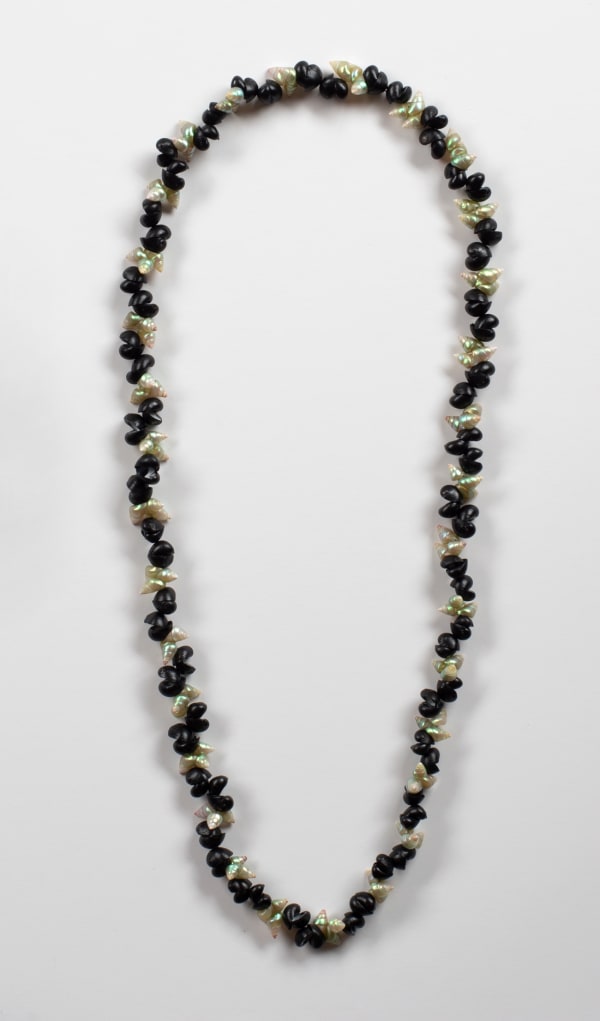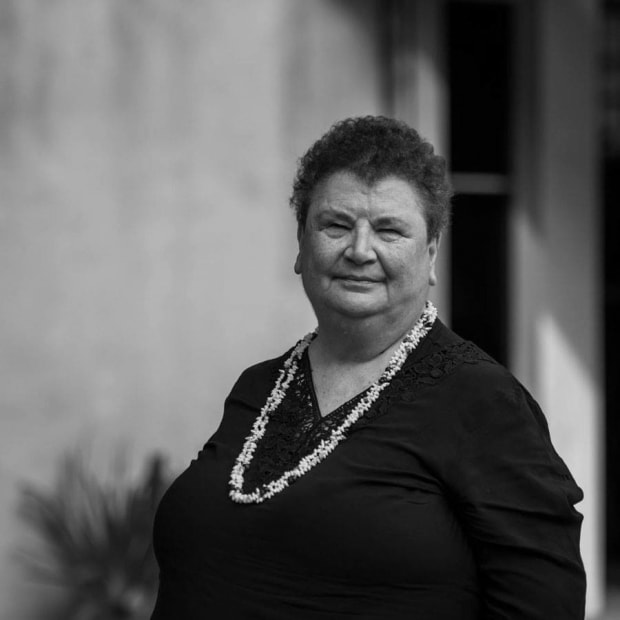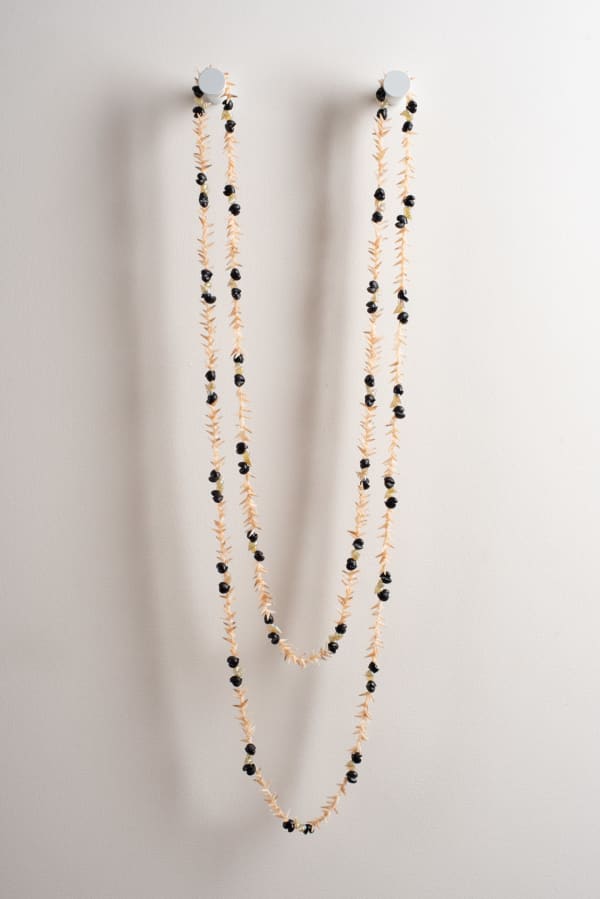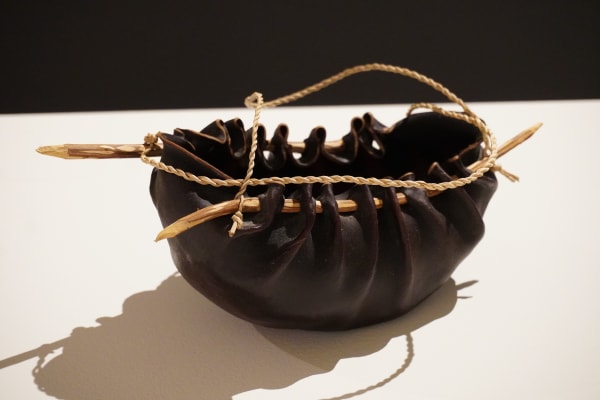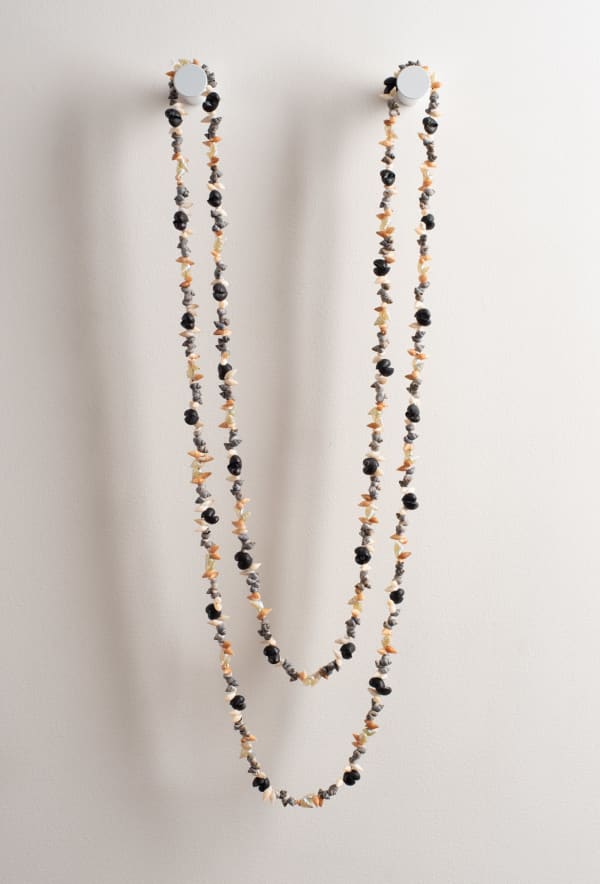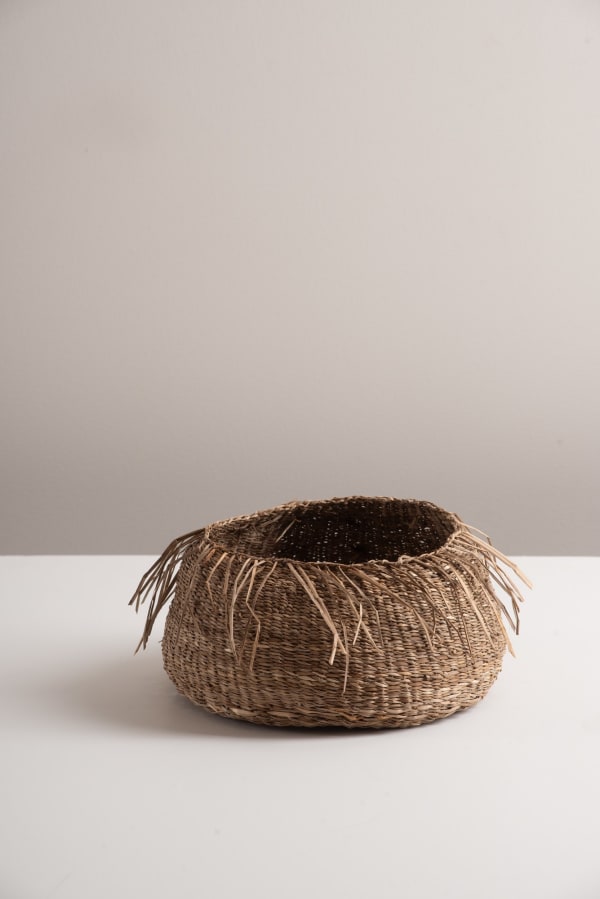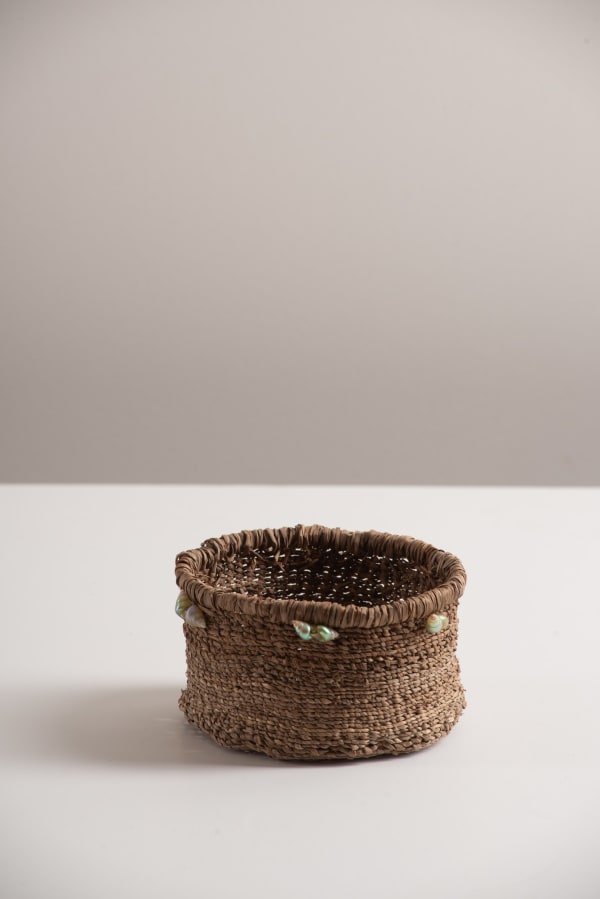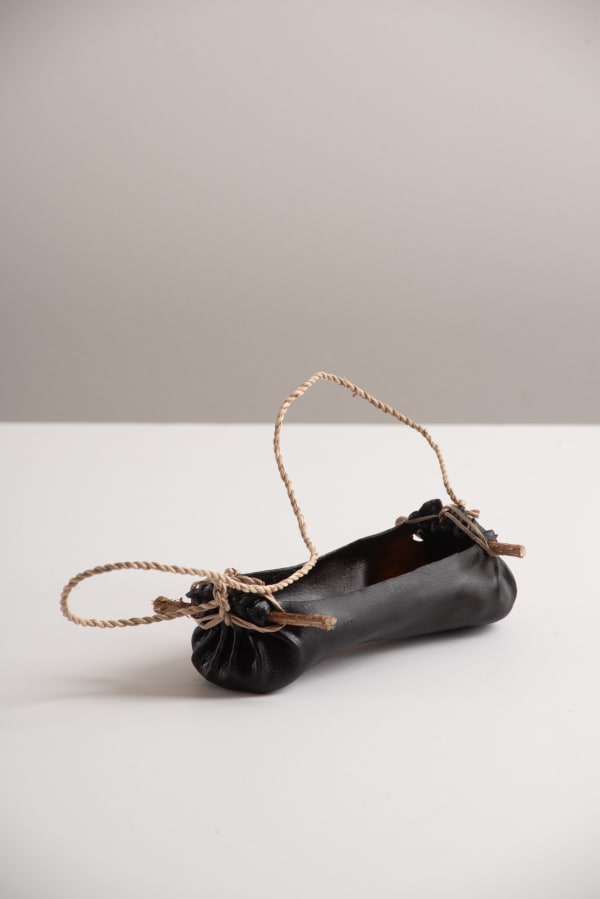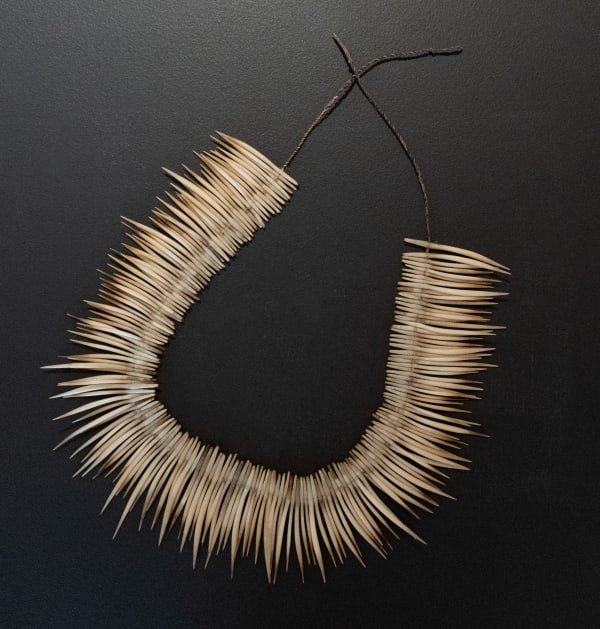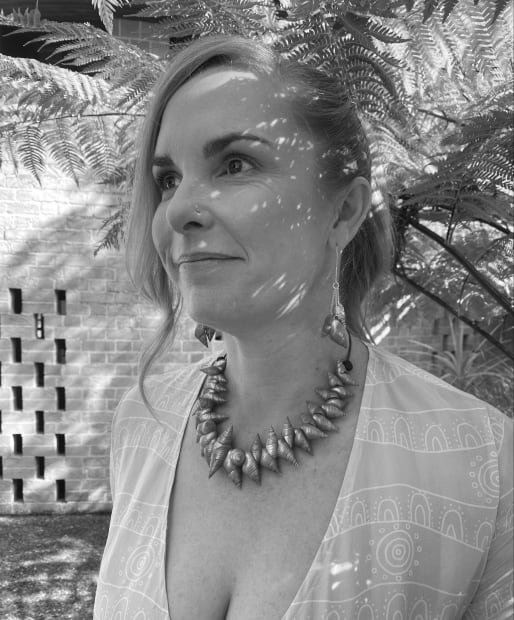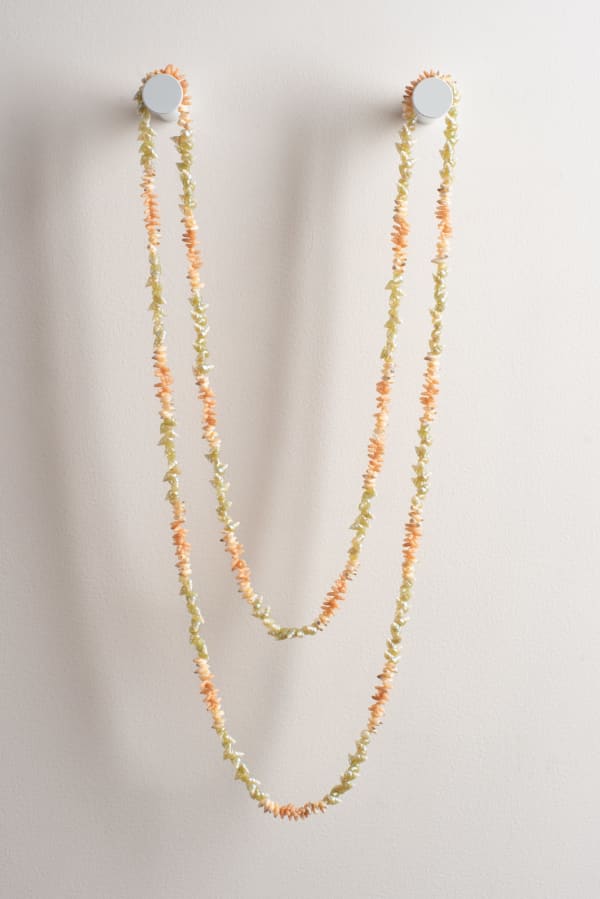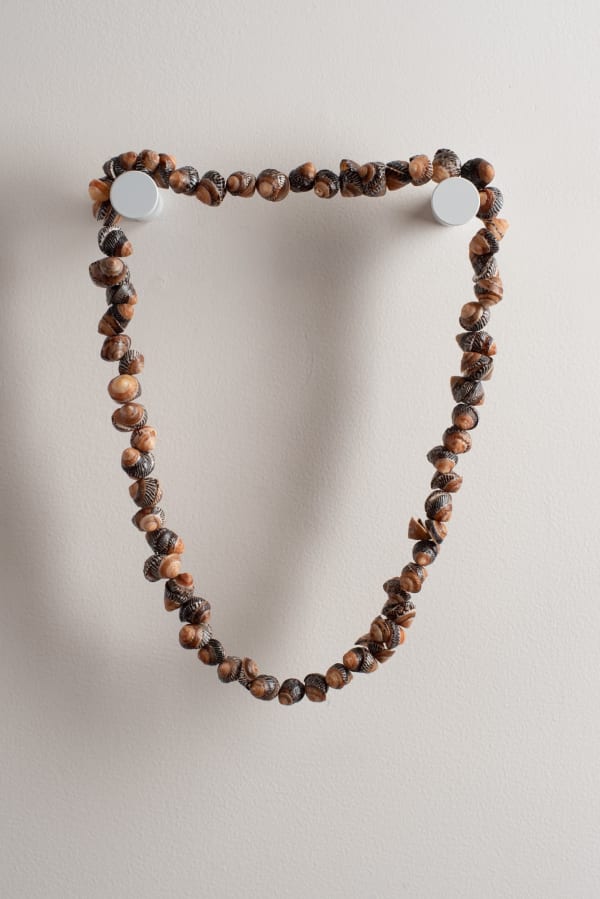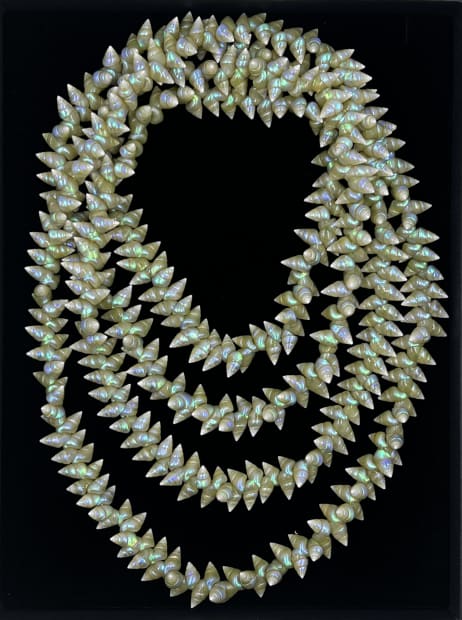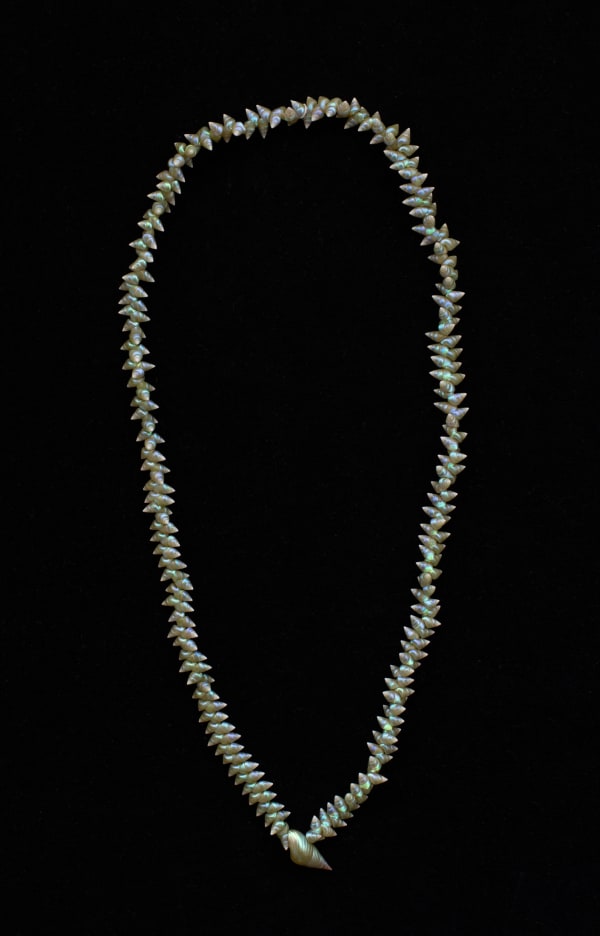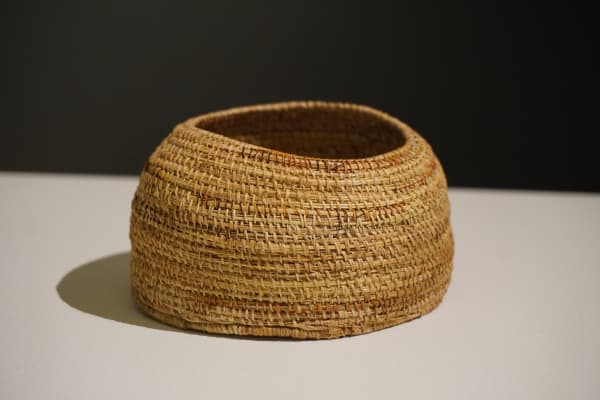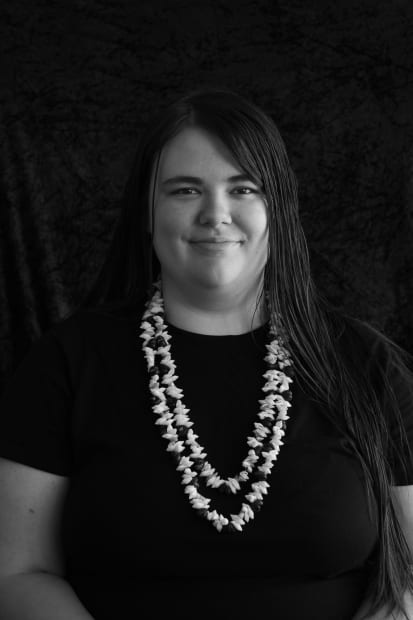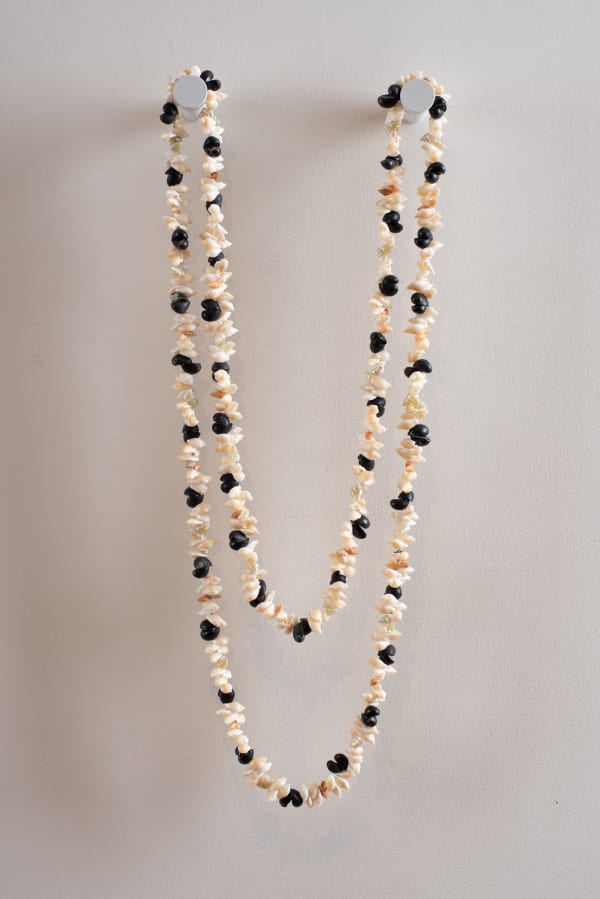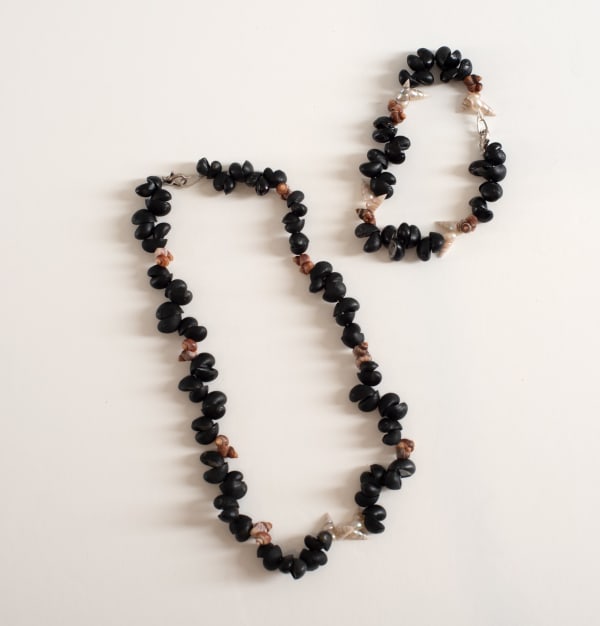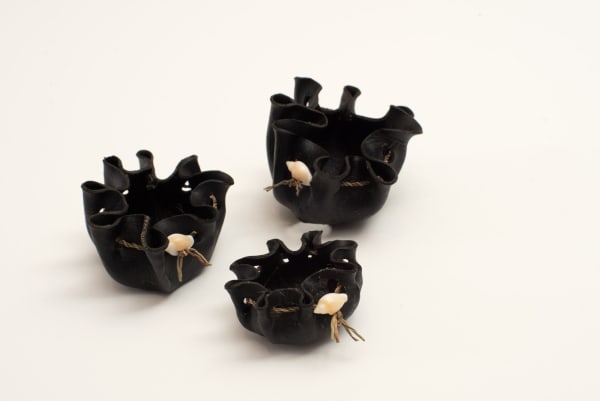-
AUNTY JEANETTE JAMES
AUNTY LOLA GREENO
AUNTY VICKI WEST
CHARLYSE GREENO
VANESSA GREENO
EMMA ROBERTSON
BEC WOOLLEY
FIONA GREEN
ASHLEE MURRAY
BRONWYN DILLON
TRACY PURDON
-

-

-
-
 Aunty Jeanette Jamespalawa necklace - trimanya krakani ta (echidna at rest), 2023echidna quills, kangaroo sinew and echidna claw57 cm (diameter)Soldview detailed image
Aunty Jeanette Jamespalawa necklace - trimanya krakani ta (echidna at rest), 2023echidna quills, kangaroo sinew and echidna claw57 cm (diameter)Soldview detailed image -
 Aunty Jeanette Jamespalawa necklace - kurina (eaglehawk), 2023wedge-tail eagle claws, echidna quills and echidna claw on kangaroo sinew72cm (overall length)Soldview detailed image
Aunty Jeanette Jamespalawa necklace - kurina (eaglehawk), 2023wedge-tail eagle claws, echidna quills and echidna claw on kangaroo sinew72cm (overall length)Soldview detailed image -
 Aunty Jeanette Jamespalawa necklace, 2023black crow and green maireener shells76 cm (approx overall length)Soldview detailed image
Aunty Jeanette Jamespalawa necklace, 2023black crow and green maireener shells76 cm (approx overall length)Soldview detailed image -

-
-

-
-

-
-

-
-

-
-

-
-

-
-
 Sisters, Emma Robertson and Bec Woolley, photo: The Mercury, 2023
Sisters, Emma Robertson and Bec Woolley, photo: The Mercury, 2023 -
-

-

-
-
 Bronwyn Dillonpalawa traditional weave basket, 2024river reed & scallop shell16 x 10 x 11 cm (overall size)Sold
Bronwyn Dillonpalawa traditional weave basket, 2024river reed & scallop shell16 x 10 x 11 cm (overall size)Sold -
 Bronwyn Dillonpalawa necklace, 2024echidna quill, black crowe and button shells80 cm (overall size)Sold
Bronwyn Dillonpalawa necklace, 2024echidna quill, black crowe and button shells80 cm (overall size)Sold -
 Bronwyn Dillonpalawa traditional weave basket, 2024river reed & abalone shell8 x 17 x 13 cm (overall size)Sold
Bronwyn Dillonpalawa traditional weave basket, 2024river reed & abalone shell8 x 17 x 13 cm (overall size)Sold
-
-

-
-

-
 Charlyse Greenopakana necklace - night sky, 2024black crow, brown gull & banded kelp shells178 cm (overall length)Soldview detailed image
Charlyse Greenopakana necklace - night sky, 2024black crow, brown gull & banded kelp shells178 cm (overall length)Soldview detailed image -
 Charlyse Greenopakana necklace and bracelet set - night sky II, 2024set of 2: black crow, brown gull & banded kelp shells, metal clasp45 cm (necklace length)
Charlyse Greenopakana necklace and bracelet set - night sky II, 2024set of 2: black crow, brown gull & banded kelp shells, metal clasp45 cm (necklace length)
24 cm (bracelet length)Soldview detailed image -
 Charlyse Greenopakana water carriers, 2024kelp, river reed, and penguin shelltriptych: 2 x 5 x 5 cm; 4 x 8 x 6 cm; 5 x 8 x 8 cm (each)Soldview detailed image
Charlyse Greenopakana water carriers, 2024kelp, river reed, and penguin shelltriptych: 2 x 5 x 5 cm; 4 x 8 x 6 cm; 5 x 8 x 8 cm (each)Soldview detailed image
-
-
Bett Gallery pays respect and acknowledges the original first people of this region, the Muwinina, and recognises Tasmanian Aboriginal people as the ongoing custodians of Lutruwita/Tasmania.
A special thank you to Emma Robertson and Bec Woolley for their curatorial partnership.

